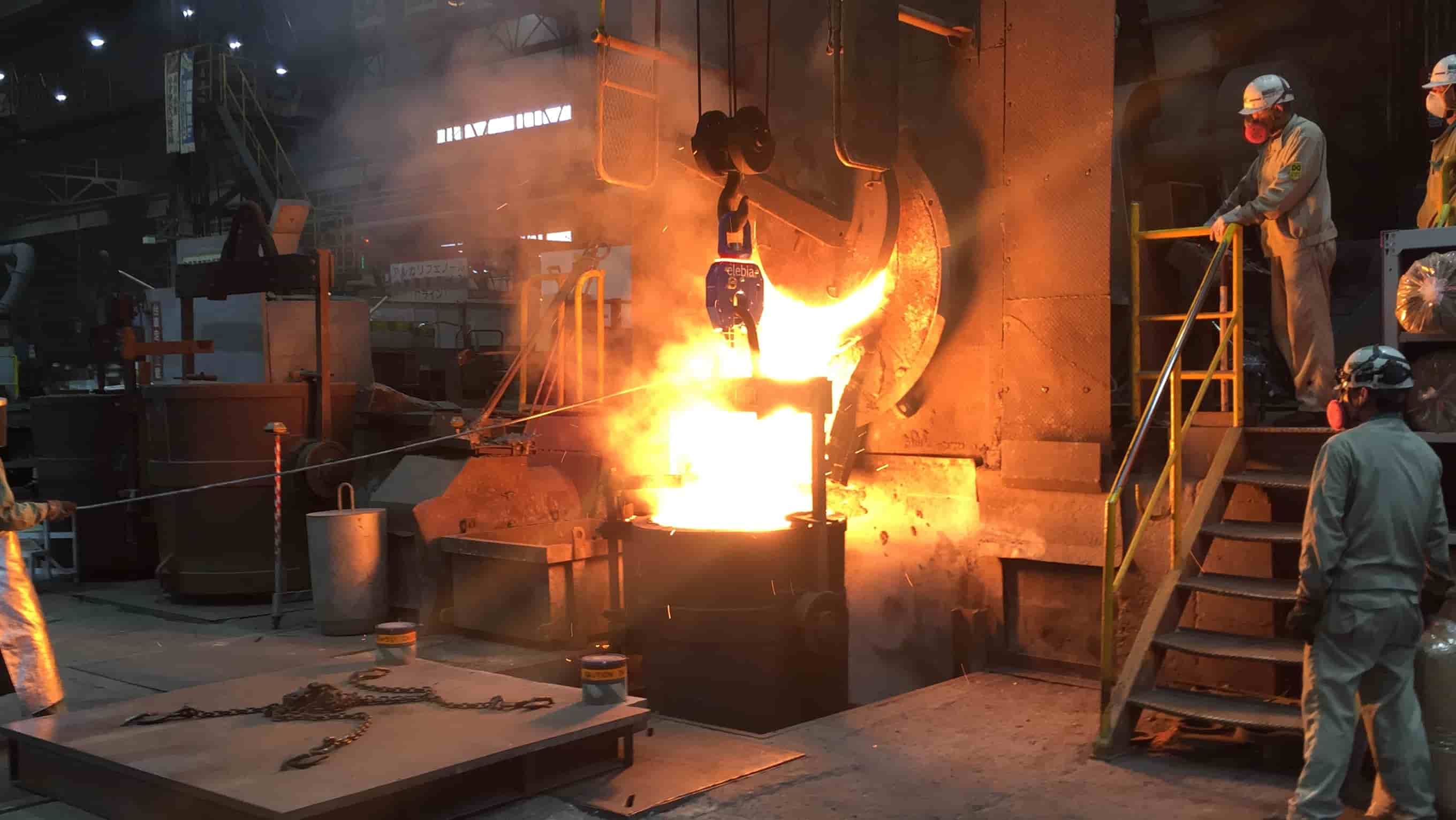NEO20 Lifting Hook in Foundry
20 January, 2020 - Editorial Team
A foundry is a factory that produces metal castings. Metals are cast into shapes by melting them into a liquid, pouring the metal into a mold, and removing the mold material after the metal has solidified as it cools. The most common metals processed are aluminium and cast iron. However, other metals, such as bronze, brass, steel, magnesium, and zinc, are also used to produce castings in foundries. In this process, parts of desired shapes and sizes can be formed.
In almost every foundry, the melting furnace is “charged” with metal and heated above the metal’s melting point. Once the molten metal has reached a specific pouring temperature it is tapped from the furnace through a spout into a pouring ladle.
In this case, the ladle’s oversized lifting point was almost 100mm in diameter, which represents a loading problem with traditional lifting hooks. And especially a safety and security headache for operators and technicians as any hook would need to be manually engaged (and released) from the lifting point.
NEO20 Lifting Hook
With the NEO20 lifting hook‘s design and geometry, this was not the case and the fail-safe design hook was able to remotely engage the lifting point via remote control. This avoided the need of any person to be dangerously close to the ladle and/or melting furnace.
Another important issue at hand during the production process was the high temperatures and radiated heat. The NEO20, with its high-strength steel body, and all of its components, like the high-capacity battery had to withstand direct temperatures of up to 60ºC/140ºF during the “tapping” process.

The NEO20 lifting hook, with its 20,000 kg/44,092 lb lifting capacity, was equipped with a load cell. This load cell, in combination with the eMAX remote control, transforms the NEO20 into a precise weighing scale. The operators were informed of the weight that was being lifted during the whole process.
Once the ladle pours the molten metal into the mold cavity, the remaining liquid is emptied and the ladle is returned. Once again, the ladle is released remotely, via remote control, keeping operators at a safe distance.



